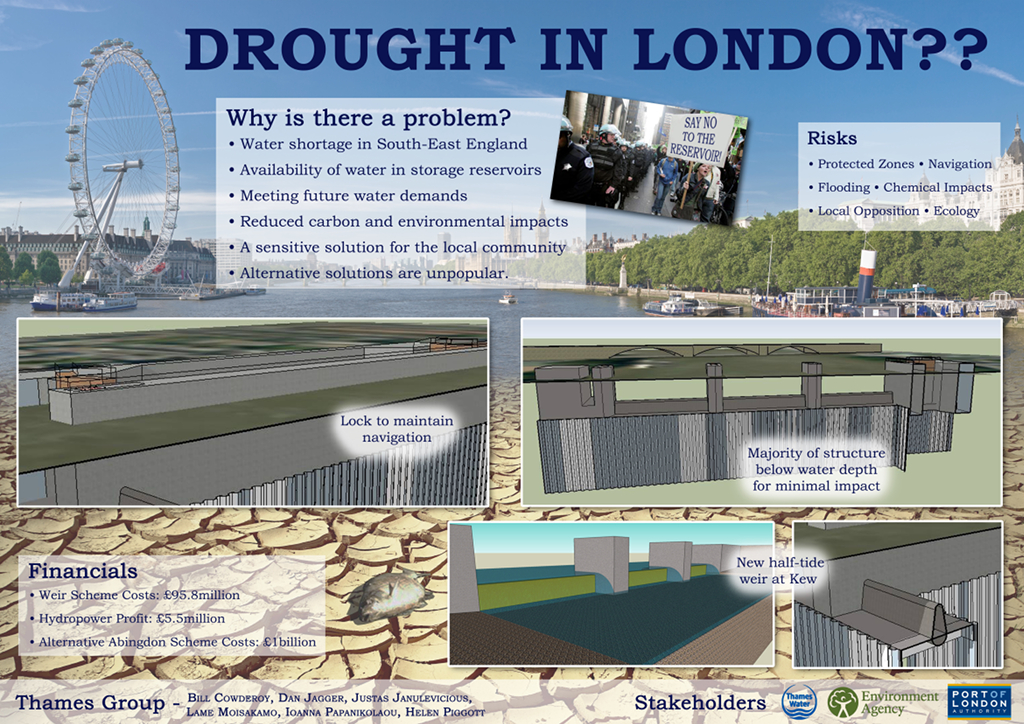The state of water resources in England and Wales was investigated in detail by the House of Lords Science and Technology Committee in their report, dated 24th May 2006. The opening statement of the Executive Summary says:-
“Water resources in England and Wales (especially in south east England) are threatened by below average rainfall in the short-term and climate change in the longer-term. The use of these resources is also facing increasingly tight regulation in order to meet ever higher ecological requirements. Simultaneously, demand for water is increasing because of population growth, a decreasing average household size and growing use of water-intensive appliances.”
Since the publication of the report, there has been little progress in leak reduction and, while the metering trials of the late 20th century indicate some reduction, overall there is no evidence to suggest that the saving is major or long term.
The second option is to increase water resources. Using current methods, in the south-east in particular we are already close to abstracting the maximum from the environment. Any further resource improvements will be minor steps at a time when we clearly need to take the next ‘big step’.
Options such as pumping water from the North and West of the country to the South-east have been considered and rejected on the basis of cost and practicality, the current favoured solution is to build more reservoir capacity but this is not easy in the crowded South-east.
This is the problem that Professor Tim Beckett set his MSc students at University of Surrey to solve. The project’s objectives were:
- To make the most effective and efficient use of water that is available where it is available
- To be as independent of the climate and weather as is possible
- To reduce dependence on electricity
- To be economic to implement
- To minimise environmental impact
- To reduce carbon emissions
The challenge
Water is sourced from underground aquifers and from rivers. The underground aquifers have been fully exploited for many years. Once this occurred, the water companies turned to abstracting from the rivers in order to increase supply. A river has two distinct parts – a freshwater upland section and a tidal saltwater estuary. In the UK most areas have two tides per day. At low tide, the only water in long stretches of the estuary comes from the upstream freshwater section.
The flow of water into the estuary is normally controlled by a weir, and flow over this weir is managed by the Environment Agency plan known as The Catchment Abstraction Management Strategy (or CAMS). This plan is devised around the fact that flow in a river is cyclic – generally high flows in winter and low flows in summer. Reservoirs are built to store water during times of high flow with the water in them used at times of low flow.
There is a trigger point referred to as the ‘Minimum Residual Flow’ and once that is reached, abstractors have to cease taking water from the river and take it from the reservoir – thus allowing what water does exist to carry on down into the estuary. This is a critical point. The reservoirs are not for just for water supply they are for maintaining flow into the estuary. So the question is – rather than store water in the upper part of the freshwater river, is it possible to store it at the point of need, the estuary itself?
A solution?
If the Environment Agency is content with the natural flow maintaining the environment in the estuary then, what is needed is a daily storage equivalent to the daily abstraction rate by the company. The engineer and past chairman of Southern Water Bill Cutting has suggested that if a moveable weir is built across the estuary, below the terminal weir and at a point where at high tide it impounds half the required volume (there being two tides per day) it could be used to supplement water taken from an upland reservoir. Instead of releasing water from the reservoir, water would be released from the temporary storage pound at the top of the estuary, at a steady rate over the low tide period, thus ensuring the correct flow at all times. Being moveable, the weir would be fully deployed at high tide and removed from the flow before the return of the next tide, and creates no interference with river flow when not required.
Two multi-disciplinary groups, each of six students, used the Thames and the Medway catchments to determine whether such a radical proposal could indeed provide a solution to the water shortage in south-east England. They found that the proposal was broadly viable and could bring significant financial and environmental benefits. In addition to their final reports the students summarised their work in these posters.



